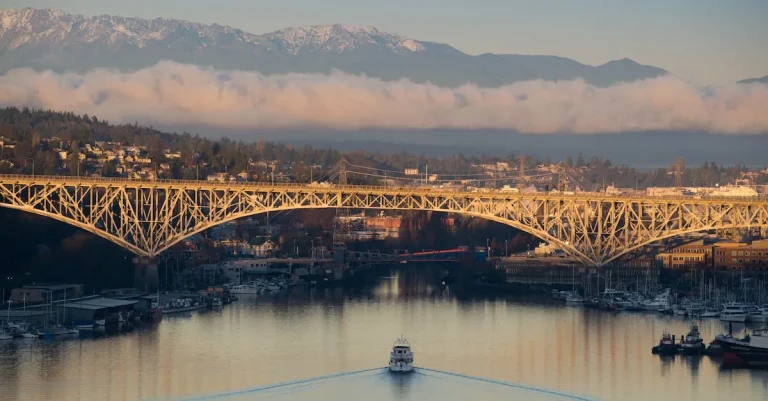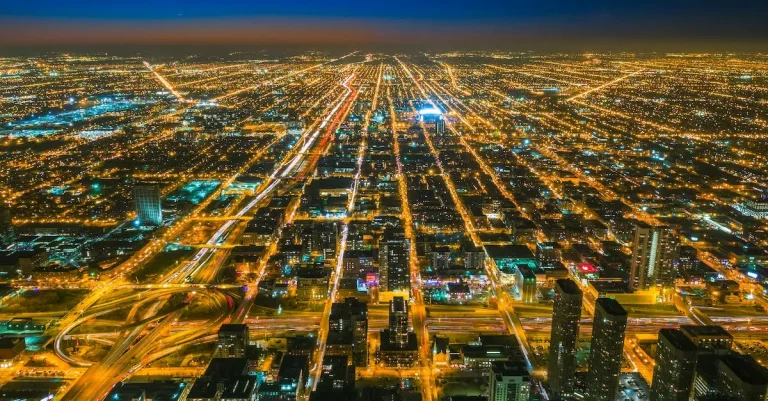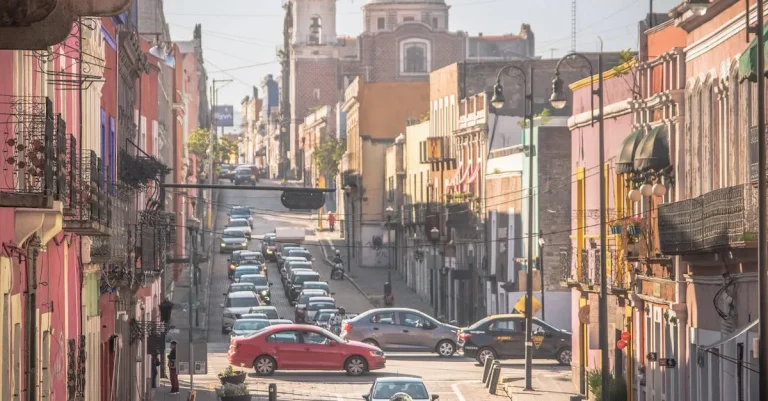Why Is Las Vegas So Hot? Exploring The Climate Conditions That Drive Extreme Heat
Las Vegas is famous for its blazing hot summers, with temperatures often soaring well above 100 degrees Fahrenheit. For visitors, the extreme heat can be almost unbearable. So why exactly does Sin City get so incredibly hot? If you’ve wondered why Las Vegas is so hot all the time, you’re not alone.
If you’re short on time, here’s a quick answer: Las Vegas gets extremely hot due to its desert location, clear skies, and dry climate. These factors combine to create a perfect storm for intense summertime heat.
In this comprehensive guide, we’ll dive into the specific climate conditions and geographic factors that make Las Vegas one of the hottest cities in the United States. We’ll look at everything from its arid desert setting and cloudless skies to the role of the sun and the urban heat island effect. Let’s take a deep dive into why Vegas heat is in a league of its own.
Las Vegas Has an Arid Desert Climate
Las Vegas is known for its scorching hot temperatures, and this is primarily due to its arid desert climate. The city is located in the Mojave Desert, which is characterized by low rainfall, high temperatures, and minimal vegetation.
This unique climate creates the perfect conditions for extreme heat to thrive.
Low humidity allows heat to build up
One of the main factors contributing to the intense heat in Las Vegas is the low humidity levels. The desert air is incredibly dry, which means that moisture evaporates quickly, leaving behind hot, dry air.
This lack of humidity prevents the air from effectively cooling down, allowing the heat to build up and create sweltering conditions.
Infrequent rainfall and cloud cover
Rainfall in Las Vegas is scarce, with an average annual precipitation of less than 5 inches. This lack of rain means that there is less moisture in the air to help cool down the temperatures. Additionally, the city experiences relatively few cloudy days, which means there is less shade and less relief from the sun’s rays.
Desert terrain lacks cooling effects of vegetation
The desert terrain in and around Las Vegas is characterized by sparse vegetation, such as cacti and shrubs. Unlike areas with lush vegetation, which provide shade and evaporative cooling, the lack of greenery in the desert offers minimal relief from the heat.
The absence of vegetation also means that there are fewer sources of moisture to help cool the air.
The City Experiences Clear, Cloudless Skies
One of the reasons why Las Vegas is so hot is because the city experiences clear, cloudless skies for most of the year. Unlike other places that may have frequent cloud cover, Las Vegas enjoys an abundance of sunshine.
Sunlight isn’t blocked by cloud cover
Clouds can act as a shield, blocking the direct rays of the sun from reaching the ground. However, in Las Vegas, the absence of clouds means that sunlight can reach the surface without any hindrance. This allows for direct heating from solar radiation, contributing to the extreme heat experienced in the city.
Allows direct heating from solar radiation
With clear skies, the sun’s rays penetrate the atmosphere and directly heat the ground, buildings, and other surfaces in Las Vegas. This direct heating, combined with the lack of cloud cover, leads to higher temperatures during the day.
Clouds can’t reflect sunlight away during the day
Clouds have the ability to reflect sunlight back into the atmosphere, which can help to cool down an area. However, since Las Vegas experiences minimal cloud cover, there is no reflection of sunlight away from the city.
As a result, the heat accumulates, leading to the scorching temperatures that Las Vegas is known for.
Geographic Location Captures Intense Summer Sun
Las Vegas, known for its scorching hot summers, experiences extreme heat due to its unique geographic location. Situated in Southern Nevada, the city is located at a latitude that intensifies the summertime sun.
The closer a location is to the equator, the more direct sunlight it receives, leading to higher temperatures. Las Vegas, with its position at approximately 36 degrees latitude, falls within this range, contributing to its hot climate.
Southern Nevada latitude intensifies summertime sun
Due to its southern location, Las Vegas receives more intense sunlight during the summer months. The angle at which the sun’s rays hit the Earth’s surface is steeper, resulting in more concentrated heat.
This increased intensity can make the temperatures in Las Vegas feel even hotter than they actually are.
Long summer days allow more daily sunlight
Las Vegas benefits from long summer days, with extended daylight hours that allow for more sunlight. During the summer solstice, which occurs around June 21st, the city experiences its longest day of the year, with over 14 hours of daylight.
The prolonged exposure to sunlight contributes to the high temperatures experienced in the region.
Sun is higher in the sky compared to other regions
Another factor that contributes to the extreme heat in Las Vegas is the higher position of the sun in the sky compared to other regions. The city’s location in the western part of the United States, combined with its southern latitude, results in the sun appearing higher in the sky during the summer months.
This higher position allows for more direct exposure to the sun’s rays, leading to increased heat.
Understanding the geographic factors that contribute to Las Vegas’ hot climate can help explain why the city experiences such intense heat during the summer months. The combination of its southern latitude, long summer days, and the sun’s higher position in the sky all play a role in creating the extreme temperatures that make Las Vegas famously hot.
The Urban Heat Island Effect Adds Extra Heat
One of the main reasons why Las Vegas experiences extreme heat is due to the urban heat island effect. This phenomenon occurs when urban areas become significantly hotter than the surrounding rural areas.
In the case of Las Vegas, the city’s unique landscape and infrastructure contribute to this effect.
Vast areas of pavement, concrete, and buildings absorb and radiate heat
Las Vegas is known for its vast stretches of pavement, concrete, and towering buildings. These materials have high thermal mass, meaning they can absorb and store heat from the sun. During the day, the pavement and buildings soak up the sun’s energy, and at night, they release that stored heat back into the atmosphere.
This continuous cycle of heat absorption and radiation contributes to the overall temperature increase in the city.
According to a study conducted by the Environmental Protection Agency (EPA), urban areas with a high percentage of impervious surfaces, such as pavement and concrete, can increase temperatures by as much as 10°F compared to surrounding rural areas.
Lack of greenery reduces natural cooling effects
Another factor that exacerbates the heat in Las Vegas is the lack of greenery. The city’s arid desert environment naturally limits the amount of vegetation that can grow. Trees, grass, and other plants provide shade and help cool the environment through a process called evapotranspiration.
This process occurs when plants release water vapor into the air, which cools the surrounding area.
Without sufficient green spaces, Las Vegas loses out on the natural cooling effects that vegetation provides. This absence of shade and evaporative cooling further contributes to the overall heat in the city.
Excess heat gets trapped in the urban landscape
The layout and design of Las Vegas also play a role in trapping excess heat. The city is surrounded by mountains, creating a bowl-like shape that can trap heat within its boundaries. As the hot air rises from the urban areas, it gets trapped against the mountains, preventing it from dissipating and cooling down.
Additionally, the tall buildings in Las Vegas can create what is known as an urban canyon effect. The narrow streets and tall structures can trap heat at street level, preventing proper ventilation and exacerbating the already high temperatures.
The combination of the urban heat island effect, lack of greenery, and the unique geography of Las Vegas all contribute to the extreme heat experienced in the city. Understanding these factors is crucial in implementing strategies to mitigate the effects of heat and create a more sustainable and comfortable urban environment.
Global Warming Exacerbates Hot Summers
Higher average temperatures increase extreme heat
One of the primary reasons why Las Vegas experiences such hot summers is due to the effects of global warming. As the Earth’s average temperature continues to rise, it amplifies the intensity of heatwaves and extreme heat events.
Las Vegas, being located in a desert region, is particularly vulnerable to these changes. The already high temperatures in the area are further intensified by the global warming phenomenon.
Trend will continue as climate change advances
Unfortunately, the trend of hotter summers in Las Vegas is expected to continue as climate change advances. Scientists predict that unless significant measures are taken to mitigate greenhouse gas emissions, the city will continue to experience even more extreme heat in the coming years.
This has significant implications not only for the residents of Las Vegas but also for the tourism industry, which heavily relies on favorable weather conditions.
Heat records are being shattered more often
As global warming progresses, heat records are being shattered more frequently in Las Vegas. In recent years, the city has witnessed a rise in the number of days with temperatures surpassing previous records.
This not only poses health risks to the population but also puts a strain on the city’s infrastructure, such as the power grid and water supply systems. It becomes crucial for authorities to adapt and implement measures to cope with these extreme heat events.
According to the National Oceanic and Atmospheric Administration (NOAA), the number of days with temperatures exceeding 100 degrees Fahrenheit has been increasing steadily over the past few decades. This trend is expected to continue, making it essential for individuals and communities to take precautions and stay informed about heat-related risks.
Conclusion
With its desert climate, cloudless skies, and geographic location, Las Vegas is prone to extremely hot conditions, especially in summer. The urban landscape of pavement, concrete, and infrastructure adds excess heat through the urban heat island effect. And climate change-driven global warming further intensifies the heat.
The combination of all these factors creates a perfect storm for the sweltering summer heat that Las Vegas is so famous for. So the next time you find yourself wilting in 110 degree Vegas temperatures, you’ll understand exactly why conditions are so incredibly and consistently hot in Sin City.








